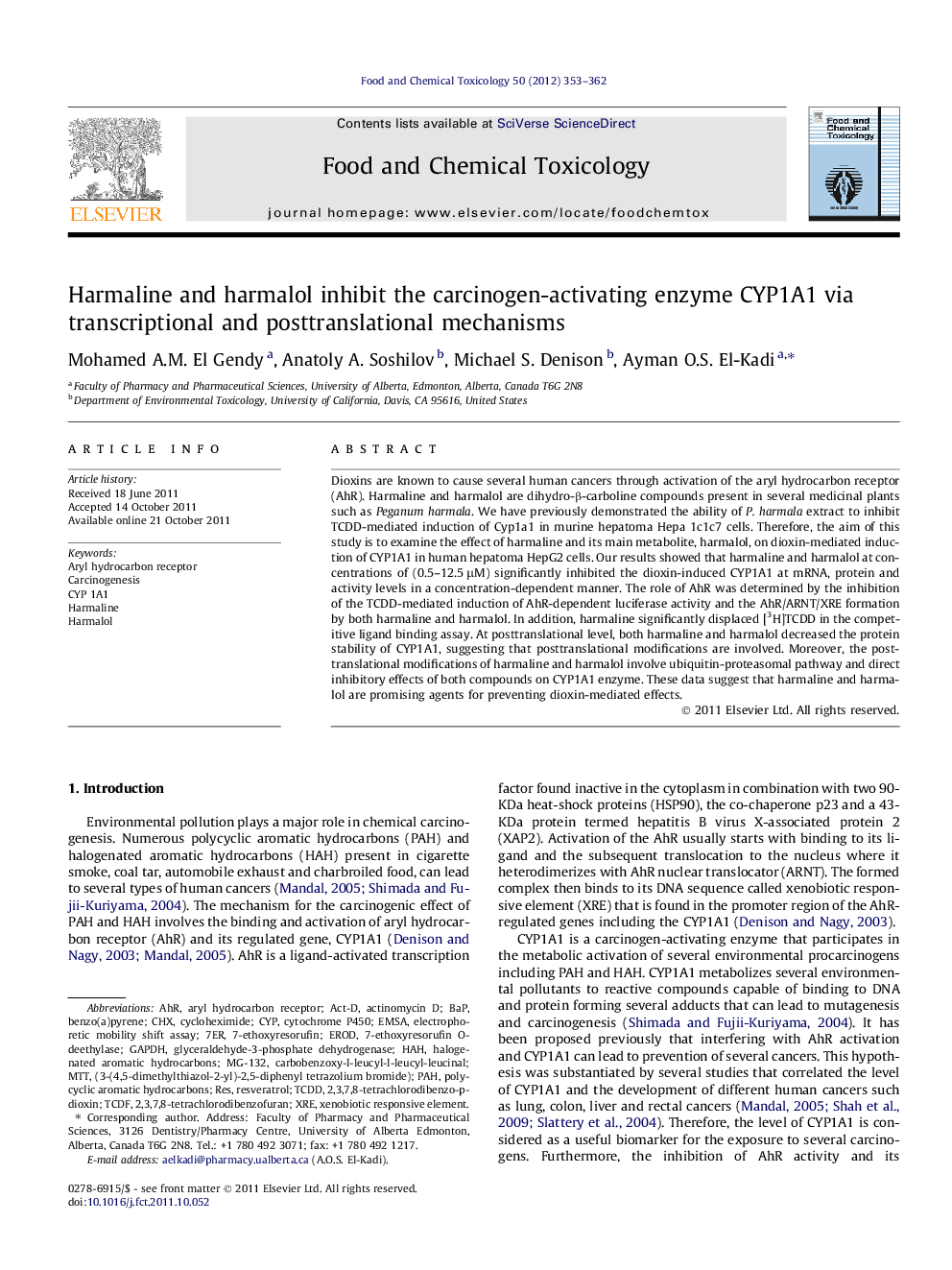| Article ID | Journal | Published Year | Pages | File Type |
|---|---|---|---|---|
| 5853380 | Food and Chemical Toxicology | 2012 | 10 Pages |
Abstract
⺠Harmaline and harmalol inhibit dioxin-induced CYP1A1 enzyme in human hepatoma HepG2 cells. ⺠Both compounds decreased dioxin-induced CYP1A1 at mRNA, protein, and activity levels in a concentration dependent manner. ⺠Their underlying mechanism involves the inhibition of the aryl hydrocarbon receptor signaling pathway. ⺠Moreover, harmaline and harmalol decreased the stability of CYP1A1 protein that suggests a posttranslational mechanism.
Keywords
BAPCHXMG-132RESTCDDXREEROD7-ethoxyresorufinAct-DGAPDHCyPPAHCYP 1A1TCDFHAHAHR2,3,7,8-Tetrachlorodibenzo-p-dioxin2,3,7,8-tetrachlorodibenzofuran7-ethoxyresorufin O-deethylaseMTTElectrophoretic mobility shift assayactinomycin DBenzo(a)pyreneResveratrolCarcinogenesisEMSA یا electrophoretic mobility shift assay Cytochrome P450cycloheximidexenobiotic responsive elementHarmalineHarmalolPolycyclic aromatic hydrocarbonsHalogenated aromatic hydrocarbonsglyceraldehyde-3-phosphate dehydrogenasearyl hydrocarbon receptor
Related Topics
Life Sciences
Agricultural and Biological Sciences
Food Science
Authors
Mohamed A.M. El Gendy, Anatoly A. Soshilov, Michael S. Denison, Ayman O.S. El-Kadi,
